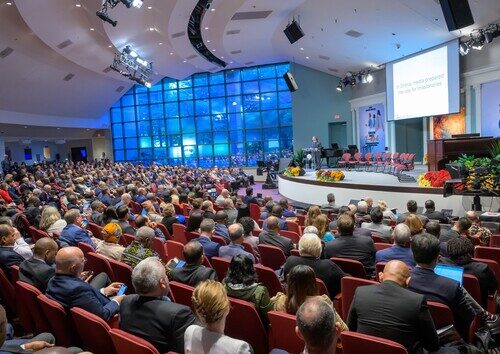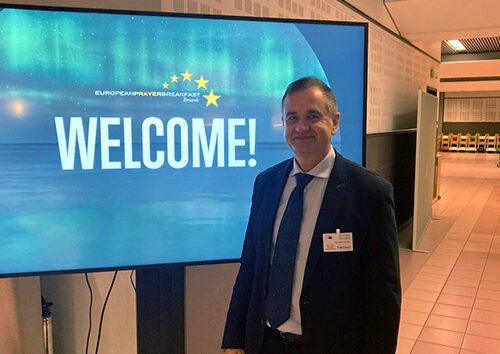6 October 2024| Silver Spring, Marland US [Marcos Paseggi]
More than 270 members of the General Conference Executive Committee (EXCOM) from around the world gathered at the Seventh-day Adventist Church headquarters in Silver Spring, Maryland, United States, on 10 October for the first day of their meetings.
The day was devoted to the annual Leadership Experience and Development (LEAD) Conference, which traditionally provides delegates with information and training on a selected topic. The 2024 event was dedicated to “Digital Strategy for Mission,” General Conference (GC) secretary Erton Köhler announced at the beginning of the day. It focused specifically on “digital strategies that support and sustain digital evangelism and online outreach,” according to associate treasurer Richard Stephenson, who coordinated the day’s activities.
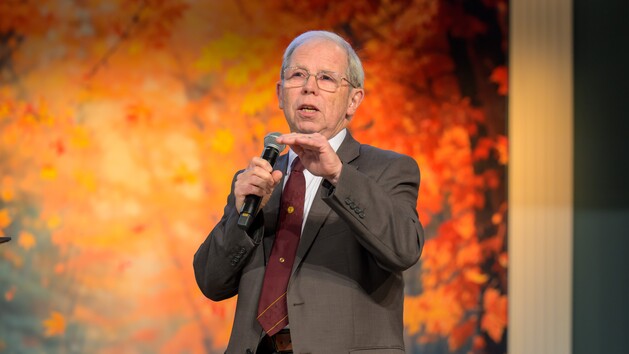
A Call for Urgency
In the first part of the program, Köhler set the tone for the day by reminding EXCOM members of the church’s call to be “an end time movement that is to prepare the world for the second coming of Jesus.” In that context, it is essential, he said, that visionary leaders retain a sense of urgency about mission. Quoting Adventist Church co-founder Ellen White, he read, “We have no time — not a moment — to lose.”
Köhler explained that while in some members the sense of urgency seems to be declining, the world appears to be moving at a faster pace, driven by technological advances and other rapid changes and transformations.
Against that background, he said, God is willing to use His human agents so that through simple actions they can allow the Holy Spirit to transform lives. “A click can reunite broken hearts, an email can bring hope, an image can impact a life, a word can change a life,” Köhler said. “A song can soften a resistant heart, a hug can lift a person up, a Bible study can convert a family, a sermon can save a multitude, a project can change the world,” because in the context of our mission to the world, “we are God’s angels,” he emphasised.
In closing, Köhler called on Adventist leaders and members to work with a sense of urgency in the midst of huge challenges, polarisation, fake news, artificial intelligence, digital distractions and addictions, and accelerated thinking. “We need urgency to avoid missing opportunities, for the time is short,” he said. “Let’s use technology for mission with a sense of urgency!”
Media Opens the Way for Mission
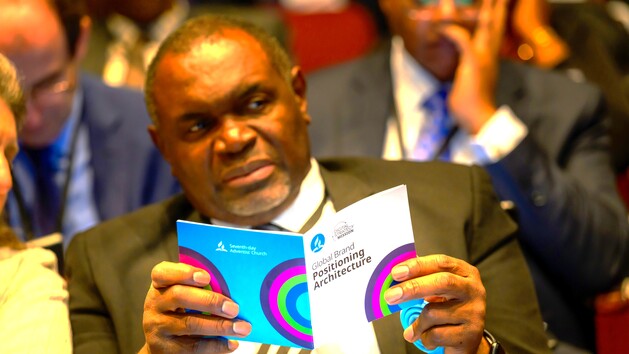
In the next segment, David Trim, director of the GC Office of Archives, Statistics, and Research, discussed the beginning of the Adventist mission in Ghana, West Africa. He showed how Adventist literature was used to build a sound body of believers even before missionaries arrived.
“Print was the cutting-edge medium of communication in its day,” Trim said. “So, we can say that media prepared the way for missionaries in Ghana.” The same happened in other places, including Guyana and Barbados in the Caribbean.
Adventist publications were used as missionary tools, including Advent Tidende, a Danish magazine that in 1872 became the first medium for foreign mission outreach, according to Trim. “Early church growth in Scandinavia reflected the influence of the magazine,” he said.
Trim concluded by emphasising that “since the early days of our movement, media have prepared the way… for the missionary.… So, we need to put greater resources into media.”
Digital Strategy for Mission
After Trim, Stephenson explained why strategy is important when talking about evangelism and mission. He quoted Ellen White, who called members to “study, plan, and devise methods to reach people where they are” (Evangelism, p. 122). “This is what digital strategy is all about,” Stephenson said. “It’s about creating a framework to ensure the sustainability of our digital evangelism efforts.”
Strategies include using digital evangelism initiatives to connect individuals to a local church community. “Unless our efforts are connected with a local church, we’ll have diminished returns,” he emphasised. Other strategies include developing tailored digital approaches for each department and ministry, adopting world church platforms, integrating and centralising resources, and securing the church’s online identity through effective brand management, he said.
Search Engines and the Truth

In the next segment, GC associate communication director Sam Neves explained the roles and potential of today’s major websites such as Google, YouTube, and TikTok in sharing the Adventist message. “Their search engines work very differently, so it’s important to understand how they present their search results so we can improve our online presence,” he said.
Neves suggested that integration among various church sites could greatly enhance Adventist teachings’ visibility on the first pages of search engines, helping digital missionaries reach many more people. “We have a calling to present God’s final message to the world,” Neves said. “And what I plead with you is that we rely completely on the Holy Spirit to know how to do it.”
Synergy for Mission
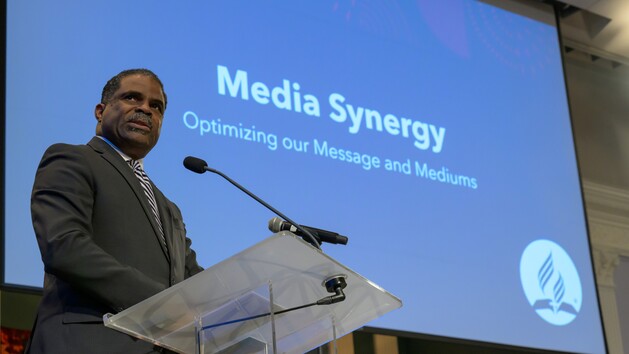
Other presenters included GC Publishing Ministries assistant director Michael Eckert, who shared about the Global Bible School Initiative, and GC treasurer Paul Douglas, who discussed media synergy initiatives among various church entities.
Douglas reported on meetings among church media entities where leaders discussed “how to spend our money to have the greatest impact, … how we can work together to achieve more.” He referred to “synergnomics,” defined as “the prudent practice of everyone paying a little and getting a lot, rather than everyone paying a lot and getting a little.”
Supporting Adventist media synergy includes working to reduce and eliminate duplications and building strategic partnerships between Adventist media brands to unify our message, Douglas said. It also includes effectively and efficiently blending traditional and new media to achieve positive and measurable outcomes. He suggested every church field could also work with these goals in mind.
An Intentional Presence
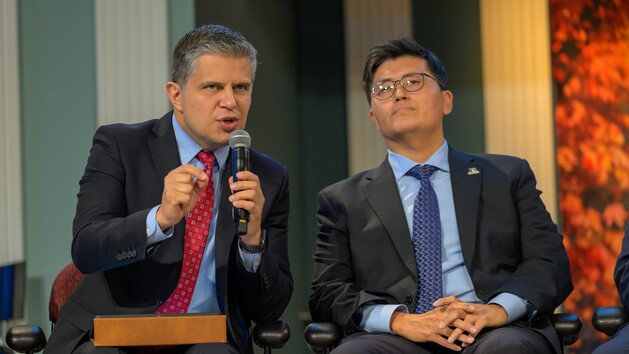
In a later segment of the morning LEAD presentations, North American Division (NAD) vice president for digital media Adam Fenner called on Adventist leaders to focus on having an intentional online presence to support mission. In today’s media climate, “we are competing for people’s attention,” Fenner acknowledged.
In this current climate, he explained, “other people can do whatever they want online, including using outrageous clickbait. We can’t do that, but what we can do is be in this space very intentionally. We have to ask ourselves, ‘How can we compete for people’s time?’”
Fenner emphasised that “the fundamental thing we need to do is to have a positive digital presence.” He then explained what this means: “A positive digital presence means that when people come to our websites, visit our social media feeds, read our newsletters, or go to our Bible studies … they have a wonderful experience,” Fenner said.
He also recommended leveraging artificial intelligence while ensuring “we don’t replace ourselves with it,” making relationships the focus of Adventist online efforts, and creating systems that lead people to find fellowship in local churches.
From Conversation to Conversion
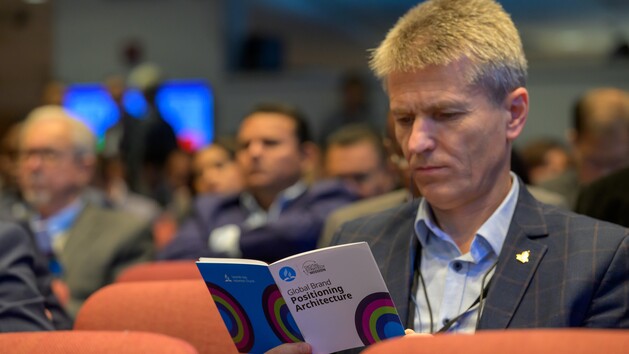
NAD Adventist Information Ministry director Brent Hardinge agreed with Fenner. “Digital evangelism is the hook to catch people’s attention,” he said. The key, Hardinge emphasised, is fostering “spiritual conversations that lead to conversions. That is what we are looking to see happen.”
In this context, Hardinge emphasised, “Technology does not change people; the Holy Spirit changes people through personal connections.… What we want to do now is increase those opportunities for connection.”
Photos: Tor Tjeransen/Adventist Media Exchange (CC BY 4.0)
The original version of this article first appeared in the Adventist Review.
